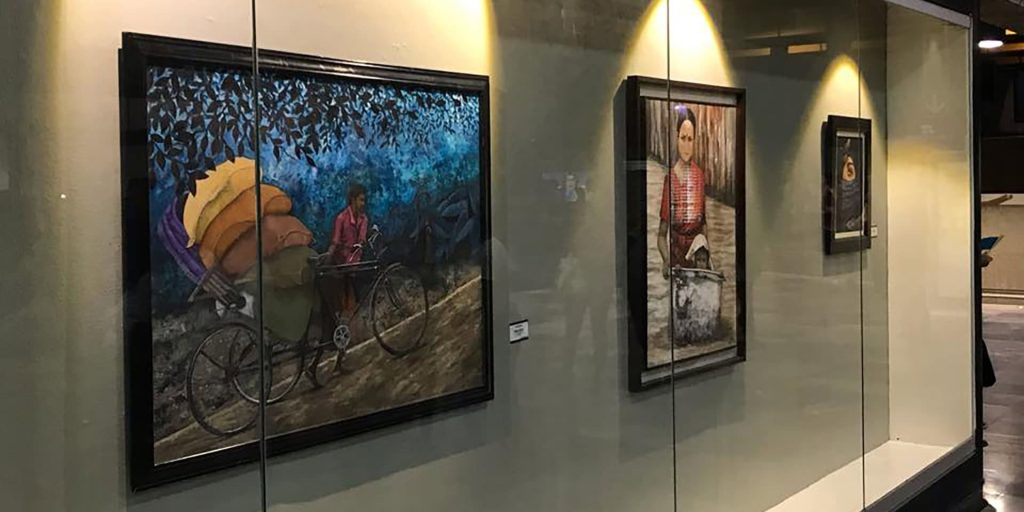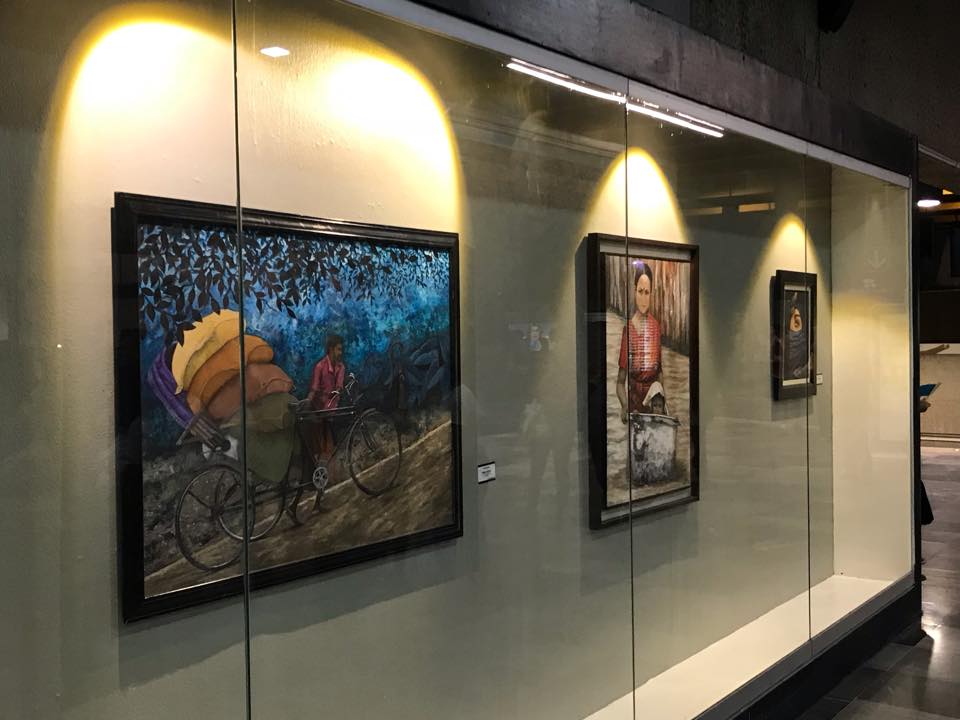
So you’ve decided to pick up painting as a hobby, awesome! Whether you want to unwind, express yourself, or simply try something new, painting can be deeply rewarding. But where do you start? Here’s a comprehensive guide to help you launch your artistic journey, avoid common pitfalls, and find joy in every brushstroke.
Choose Your Medium Wisely
Before buying supplies, you need to choose which painting style to explore:
- Watercolor: Watercolor paints are diluted with water for translucent layers. They’re easy to set up and easy to clean—an excellent choice for beginners.
- Acrylic: Vibrant, fast-drying, and versatile. Acrylic paints can mimic oil or watercolor depending on dilution. They dry quickly, which is great if patience isn’t your strong suit.
- Oil: Luxurious and richly blending, oils take longer to dry. They require more space, ventilation, and cleaning supplies—but many love their lush textures.
Tip: Begin with either acrylic or watercolor until you grow comfortable—then decide if you want to explore other mediums deeper.
Gather Basic Supplies (Don’t Go Overboard)
You don’t need to break the bank; start with essentials:
- Paints: A basic set of primary colors plus black and white. Quality doesn’t have to be expensive.
- Brushes: A few sizes of flat and round brushes in synthetic fibers work well.
- Canvas or paper: Choose canvas panels or pads made for your medium (watercolor paper for watercolors).
- Palette: Disposable paper palettes or a reusable plastic palette.
- Water container & rags: For cleaning brushes and wiping mistakes.
- Tape & easel/self-stick board: To hold your paper steady.
Resist the urge to over-purchase. Begin with basics and upgrade as your skills develop.
Learn the Fundamentals: Color Theory & Composition
Understanding the basics will boost your confidence and creativity:
Color Theory
- Primary colors: Red, blue, yellow—these can mix all other hues.
- Complementary colors: Colors opposite on the wheel; put them next to each other for maximum contrast.
- Warm vs. cool colors: Affects mood—warm evokes energy, cool calms.
Composition
- Rule of thirds: Divide your canvas into thirds; place focal points at intersections.
- Balance and movement: Arrange elements so the viewer’s eye flows naturally around the painting.
You can learn these through short online tutorials or even a book—knowledge will transform your creations.
Practice Basic Techniques
Mastering these building blocks gives you confidence:
- Flat wash: Even background color—especially for watercolor.
- Gradient/ombre: Blend smoothly from one shade to another.
- Dry brushing: Lightly drag nearly dry paint for texture.
- Wet-on-wet: Apply paint onto a wet surface for smooth blending.
- Layering/glazing: Build color depth gradually.
Practice each technique repeatedly—5-to-10-minute warmups before every session work wonders.
Sketch Your Design First
Jumping straight into paint can be intimidating. A light pencil sketch helps:
- Outline your subject’s basic shapes and placements.
- If drawing’s not your thing, use tracing, grid method, or even a simple projector technique.
A solid sketch sets you up for painting success.
Build a Routine & Create Small Challenges
Consistency is key:
- Paint for as little as 15–30 minutes a day, or allocate weekend sessions.
- Try monthly prompts like: “Paint a nature scene,” “Use only 3 colors,” or “Try abstract texture painting.”
These exercises push your creativity and help you explore different styles.
Study & Get Inspired
- Following artists on Instagram, Pinterest, or YouTube.
- Taking a beginner class at a local community center or art school.
- Visiting galleries or museums (in person or virtually) to observe technique, color, and composition.
Aim to learn one new idea per month and apply it in your routine.
Make Mistakes—and Learn from Them
Painting isn’t about perfection—it’s about discovery:
- If a color turns out off, wipe, paint over, or let it dry and start fresh.
- Use mistakes as opportunities: find patterns, try new colors, note what worked or didn’t.
Every mark is a chance to improve.
Join a community
Connect for support, learning, and motivation:
- Local classes: Great for hands-on feedback and camaraderie.
- Online groups: Reddit’s r/painting, Facebook groups, or Discord servers are full of encouragement.
- Social sharing: Post your work, comment on others, participate in online painting challenges.
Community helps turn a solitary hobby into a vibrant, shared journey.
Reflect on Progress—Enjoy the Journey
Finally, celebrate your growth:
- Keep your early paintings for comparison.
- Create a catalog or digital folder of your work.
- Reflect on what you’ve learned: “I once struggled with color mixing… now I feel confident blending shades.”
Your progress matters more than perfection—and every painting is a milestone. Final Thoughts
Started painting as a hobby isn’t about talent, it’s about curiosity, practice, and enjoyment. Choose your medium, gather basic supplies, learn fundamentals, experiment boldly, and surround yourself with creativity and community.
Above all, have fun. let painting be a refuge, a challenge, and a joy. The only rule: keep painting, each brushstroke matters. Happy creating!
Cómo empezar a pintar como pasatiempo: Consejos para nuevos artistas
¡Así que has decidido empezar a pintar como pasatiempo! ¡Genial! Ya sea que busques relajarte, expresarte o simplemente probar algo nuevo, la pintura puede ser profundamente gratificante. Pero, ¿por dónde empezar? Aquí tienes una guía completa para ayudarte a comenzar tu camino artístico, evitar errores comunes y encontrar alegría en cada pincelada.
Elige tu medio con sabiduría
Antes de comprar materiales, necesitas elegir qué estilo de pintura explorar:
- Acuarela: Se diluye con agua para obtener capas translúcidas. Fácil de usar y limpiar; excelente para principiantes.
- Acrílico: Vibrante, de secado rápido y versátil. Puede imitar el óleo o la acuarela según la dilución.
- Óleo: Lujoso y de mezcla rica, tarda más en secar y requiere más espacio y limpieza, pero ofrece texturas bellísimas.
Consejo: Comienza con acrílico o acuarela hasta que te sientas cómodo(a); luego decide si quieres explorar otros medios.
Reúne materiales básicos (sin exagerar)
No necesitas gastar mucho. Empieza con lo esencial:
- Pinturas: Juego básico con colores primarios, más blanco y negro.
- Pinceles: Varios tamaños planos y redondos de fibra sintética.
- Lienzo o papel: Usa paneles de lienzo o papel adecuado para tu medio (papel de acuarela si usas acuarela).
- Paleta: Puede ser desechable o reutilizable de plástico.
- Recipiente con agua y trapos: Para limpiar pinceles y corregir errores.
- Cinta y tabla o caballete: Para sujetar el papel.
Evita comprar en exceso. Empieza simple y ve mejorando a medida que avanzas.
Aprende los fundamentos: teoría del color y composición
Comprender lo básico aumentará tu confianza y creatividad:
Teoría del color
- Colores primarios: Rojo, azul y amarillo; combinándolos obtienes todos los demás.
- Colores complementarios: Están opuestos en la rueda de color; juntos crean contraste.
- Colores cálidos y fríos: Afectan el estado de ánimo. Cálidos = energía. Fríos = calma.
Composición
- Regla de los tercios: Divide tu lienzo en tercios; coloca los puntos focales en las intersecciones.
- Equilibrio y movimiento: Distribuye los elementos para guiar naturalmente la mirada.
Puedes aprender esto con tutoriales en línea o libros. El conocimiento transforma tus obras.
Practica técnicas básicas
Dominar las técnicas esenciales aumenta tu confianza:
- Lavado plano: Capa uniforme de color (ideal para acuarela).
- Degradado: Mezcla gradual de un tono a otro.
- Pincel seco: Arrastrar pintura casi seca para añadir textura.
- Húmedo sobre húmedo: Pintar sobre una superficie húmeda para lograr mezclas suaves.
- Capas/esmalte: Añadir profundidad de color poco a poco.
Practica cada técnica seguido—unos minutos de calentamiento antes de pintar ayudan mucho.
Haz un boceto previo
Pintar sin guía puede ser intimidante. Un boceto a lápiz ayuda a:
- Delinear las formas y ubicaciones principales.
- Si no sabes dibujar, usa calcar, cuadrícula o proyector.
Un buen boceto te prepara para el éxito al pintar.
Crea una rutina y retos pequeños
La constancia es clave:
- Pinta al menos 15–30 minutos al día, o dedica tiempo los fines de semana.
- Intenta retos mensuales como: “Pinta un paisaje”, “Usa solo 3 colores” o “Crea una textura abstracta.”
Estos ejercicios fomentan la creatividad y te ayudan a probar diferentes estilos.
Estudia e inspírate
Alimenta tu crecimiento artístico:
- Sigue artistas en Instagram, Pinterest o YouTube.
- Toma una clase para principiantes en tu centro comunitario o escuela de arte.
- Visita galerías o museos (presencial o virtualmente) para observar técnicas y estilos.
Aprende algo nuevo cada mes y practícalo en tu rutina.
Comete errores—y aprende de ellos
Pintar no se trata de perfección, sino de descubrimiento:
- Si un color sale mal, límpialo, pinta encima o deja secar y comienza otra vez.
- Usa errores como oportunidades: encuentra patrones, prueba colores nuevos, analiza lo que funcionó o no.
Cada trazo es una oportunidad de mejorar.
Únete a una comunidad
Conéctate para recibir apoyo y motivación:
- Clases presenciales: Buenas para recibir retroalimentación y conocer personas.
- Grupos en línea: Reddit (r/painting), Facebook o Discord tienen comunidades activas.
- Comparte en redes: Publica tus obras, comenta en otras, únete a retos creativos.
La comunidad convierte un pasatiempo solitario en un viaje compartido.
Reflexiona sobre tu progreso—disfruta el proceso
Celebra tu crecimiento:
- Guarda tus primeras pinturas para comparar.
- Crea un catálogo o carpeta digital con tus obras.
- Reflexiona: Antes me costaba mezclar colores… ahora lo hago con confianza.
Tu progreso importa más que la perfección. Cada pintura es un paso más.
Reflexión final
Empezar a pintar no es cuestión de talento, sino de curiosidad, práctica y disfrute. Elige tu medio, reúne materiales básicos, aprende lo fundamental, experimenta con valentía y rodéate de creatividad y comunidad.
Sobre todo, diviértete, deja que pintar sea un refugio, un reto y una alegría. La única regla: sigue pintando, cada pincelada cuenta. ¡Feliz creación!




